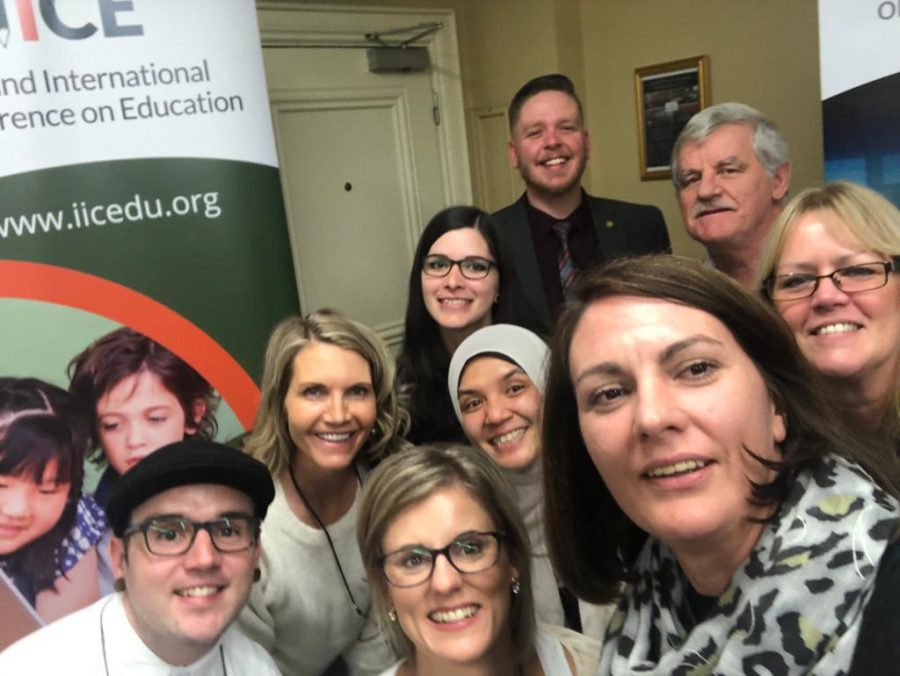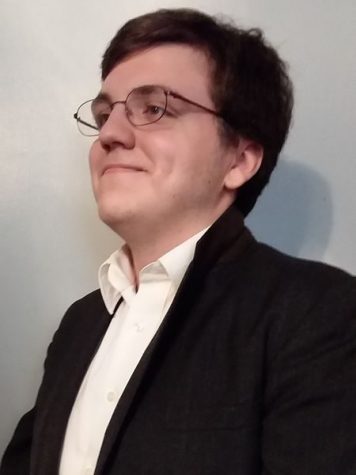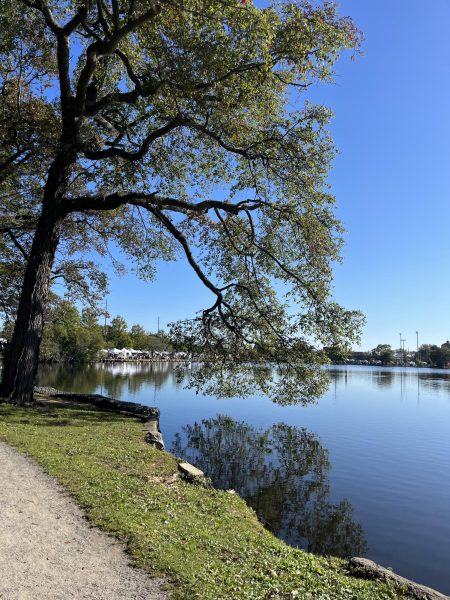A Digital Paradox: The Tale of Censorship in our Connected World
Teachers and Administrators at the Ireland International Conference on Education
December 17, 2019
December 31, 2000. It’s just two minutes until midnight. People from all walks of life have already and are about to ring in the new year. The countdown starts and the wait is over. Fireworks light up the sky, bottles of champagne pop open as celebrations continue into the early hours. It’s finally the new year, 2001. Ever since that day, the world embarked upon a new age for mankind. It is an age of progress and innovation, the new hope for the century, it’s the 21st century. As we approach the new decade, we can look back on our achievements to see just how far we have come.
Certainly, no invention or innovation had a greater significance at the start of the 21st century than the internet. Since the origins of the internet in the 1960s and the public launch of the World Wide Web in 1991, we’ve been a witness to the possibilities of mass communication and the eventual development of social media services to this day. Without a doubt, we assuredly live in a connected world. Half a century ago, the scale in which we’ve developed in terms of mass communication and technological advancements would be considered science fiction. However, despite our connected efforts, we still face digital censorship in the 21st century.
It almost seems paradoxical, but it’s the inevitable truth. No matter where you look online, you’re likely to come across examples of digital censorship. Whether it be a controversial speaker expressing an unpopular opinion or a sensitive post arguing against said opinion, censorship exists and continues to block our knowledge in order to gain a deeper understanding than what we are presented with. In our own school, we face the same dilemma regarding digital censorship. Students and teachers are well aware of the situation: we’ll find ourselves searching for a website, for images, videos, and other media, only to find out that such media is blocked by the district. Although, all hope is not lost.
Recently, Ms. Flannelly, one of our esteemed Assistant principals, set out for the Ireland International Conference on Education (IICE) to address this issue. In her presentation entitled, The Hypocrisy of Democracy and Internet Filtering in American Education, Flannelly argues the consequences of digital censorship in our globally connected world. Flannelly states, “A dirty little secret in our American public school system is that the access to legitimate educational information is both limited and inconsistent… In New York City public schools, for example, students conduct online research and freely collaborate on social media (locally and globally) under adult supervision, yet their peers in most neighboring Long Island schools are forbidden to do so due to internet filtering on their districts’ computer networks.”
Why are public educational institutions hindering our discovery of knowledge? Why is it the inevitable reality to “struggle” when acquiring and sending information? Why do districts forbid students the ability to search the internet for plethoras of information? There are many reasons behind a district’s conduct, “Due to fear of online predators, radicalizers, bullies and imposters,” according to Ms. Flannelly’s presentation. There’s no need to look any further for the culprit behind school censorship than the Children’s Internet Protection Act (CIPA). The CIPA is a direct detriment against our rights and freedoms of information. Flannelly refers to the CIPA as, “A law that was intended to protect children, [that] is limiting the intellectual freedom of students and educators throughout the nation.”
Ms. Flannelly’s presentation goes on to break down the flaws of the Children’s Internet Protection Act. According to the Federal Communications Commission, the CIPA is intended to address the concerns of a child’s ability to access inappropriate content on the web. The CIPA thus imposes restrictions on schools and libraries that receive discounts for internet access through a program known as E-Rate. The E-Rate program is designed to make internet services and other products more affordable for school districts and media centers. The E-Rate programs require three of the following criteria to be considered for funding. These include filtering images that are obscene or pornographic, monitoring minors’ online activity and educating minors about appropriate online behavior. The result of such regulations is distressing, to say the least.
“Denying American students and educators access to information and prohibiting them from sharing ideas (online) beyond their school district’s network has dire consequences,” says Ms. Flannelly. “With such limited access, a student might not be able to learn about the most innovative advances in medicine, education, technology, access important resources such as Google Earth or the U.S. Constitution because legitimate educational sites are frequently miscategorized by filtering software.” The list goes on, but we already see the results of the CIPA’s mishaps. Surprisingly, lawyers across the United States advocate for the importance of the E-Rate program, yet another saddening blow to the integrity of liberty and justice in America. “Internet access is limited and inconsistently filtered (i.e., an individual or group decides what content can be searched) even though CIPA does not require blocking online text or controversial viewpoints,” says Ms. Flannelly.
In Ms. Kelly’s Journalism class, censorship hinders our activities to obtain images for fair use, a major factor in promoting an article’s excellence. Under School Newspaper’s Online (SNO) policy, articles will not receive recognition for Best of SNO, a section on SNO’s website dedicated to SNO’s greatest content. According to Ms. Kelly, “One of the problems that the Charles Street Times faces with censorship is the inability to find “fair use” pictures to accompany our articles. Sites such as Wikimedia Commons, which is a large database of free and legal photos that can be republished, are blocked for both students and teachers.”
It seems strange that sites, which host fair use content, are blocked by E-Rate’s criteria. Under the CIPA, the act does not allow the blocking of such sites nor does it require tracking of a student’s internet use. In an interview with Winston Himsworth of E-Rate Central and Ms. Flannelly, Himsworth reports the following: “When the CIPA was first enacted, the FCC’s (Federal Communications Commission) view was that the CIPA was not their idea; they were required by statute to enforce it, and would do so by asking E-Rate applicants to certify their compliance. For the most part, this has meant letting each applicant interpret CIPA themselves.” Himsworth continues by saying, “There is specific FCC language indicating that students should be educated regarding interacting on social media sites. You might argue that you can’t do that if there is no access to social media, any more than you could teach swimming without water.
As the years continue on and technology continues to progress, we are left with the issue of digital censorship which poses a significant impediment to our access of knowledge and information. The paradox still stands, while we may be globally connected by the internet, we are still heavily censored to date. Ms. Flannelly concludes by saying, “…Our nation’s leaders implore us to go on with our normal lives but to be diligent about reporting anything suspicious. This mindset, in terms of intellectual freedom, is not shared by school board members across the country who, misguidedly, impose strict filtering guidelines in their school district policies. It is imperative that these bodies who govern education, an inalienable right, minimize these restrictions (in accordance with CIPA) so that evil-minded individuals and groups who attempt to thwart our learning and thinking, particularly the learning of children whose only guided Internet access takes place at school, are disarmed.”
We can only hope that as time progresses and individuals become aware of this conundrum, we can combat its dangerous impacts through intellectual reasoning and freedom. Only then could this paradox be solved.












